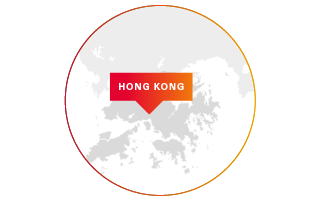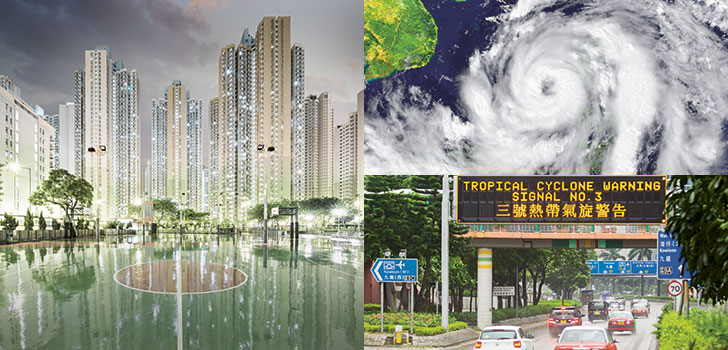Facing headwinds


During May to November, the risk of typhoons is significant in Hong Kong. The Hong Kong Observatory (HKO), a government department responsible for monitoring and forecasting weather, has set up a sophisticated typhoon warning signal system.
When it communicates a higher warning signal, the majority of businesses are forced to shut down, often resulting in economic loss.
“While many people understand how devastating actual typhoons can be, the economic effect of the warnings can also be severe. Resilience means identifying all risks, and addressing them head-on through new innovations.”
Melanie Lau
Underwriter Property Swiss Re Corporate Solutions, Swiss Re
1.4
Typhoon warning signals
of level 8 and above
happen on average
1.4 times per year.
Typhoon warning signal
When a typhoon approaches, the Hong Kong Observatory (HKO) will consider issuing a typhoon warning signal, classified by numbers indicating risk severity levels. When a No. 1 signal is issued, it means a tropical cyclone is within about 800 kilometres of Hong Kong. When a No. 3 signal is issued, it means strong wind is expected in the city, and potentially results in the closing of businesses most directly affected by conditions. However, when the No. 8 signal is issued, gale force winds that may spike to very high speeds are expected, and the majority of businesses might be closed.
